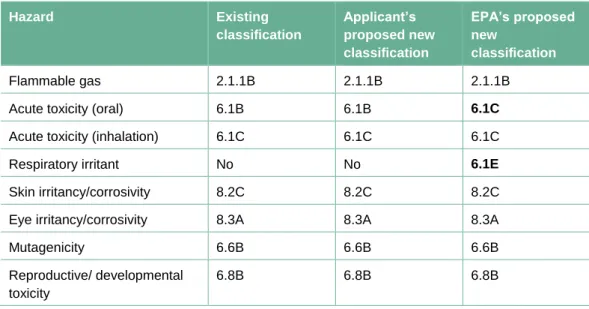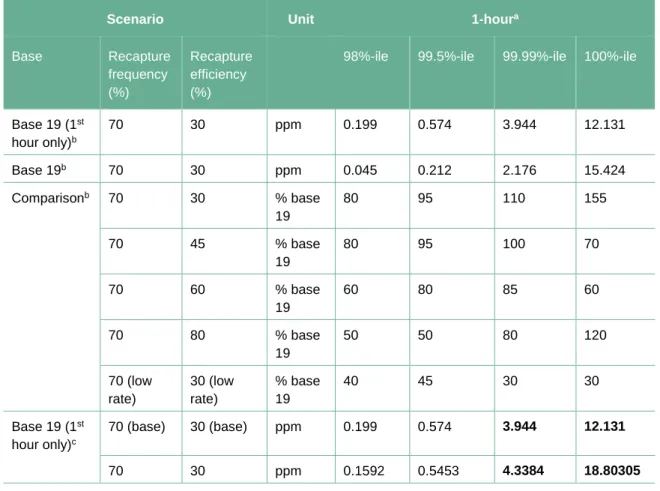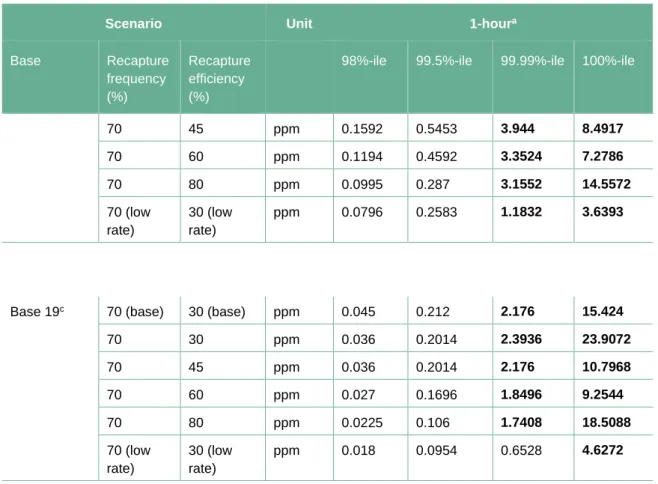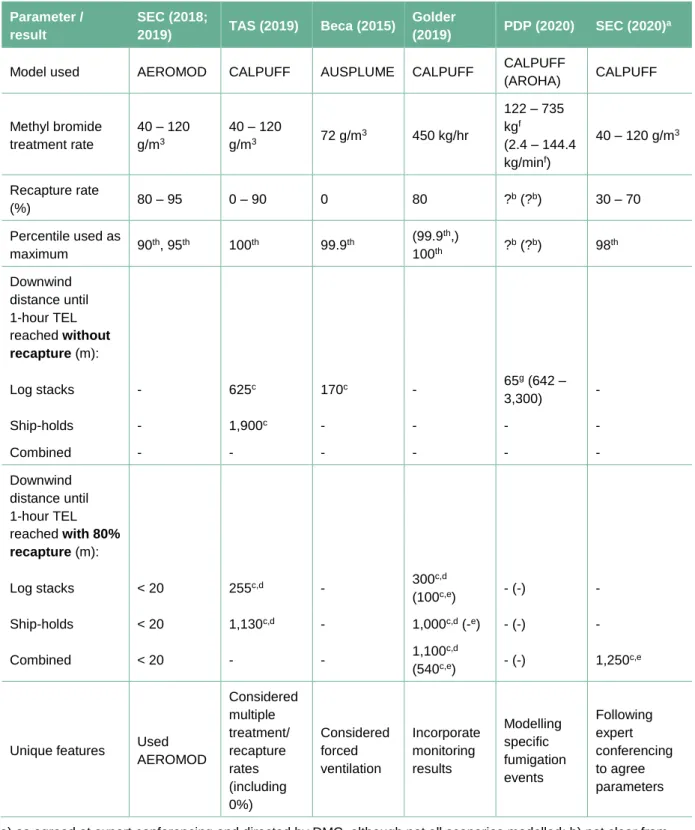The information was requested by STIMBR under Article 52 of the Law and the time limit for public notification of this application was waived. The DMC made requests for further information in accordance with Article 58 of the Law on a number of organisations.
Response from other government agencies
Workplace health and safety reforms
Information sources
3 Applicants proposal
Proposed new recapture definition
Proposed new deadlines for ship hold fumigations
Notwithstanding this exemption, EPA requires:. a) disinfection companies must continue research and development of technologies to address the challenges of recovering methyl bromide from ship holds after fumigation.
Proposed requirements for data collection and buffer zones
The DMC may wish to consider the impact that any potential changes to the current recapture definition and requirements under HSNO as part of the application before them may have on the requirements under HSWA. Any changes to the HSW (HS) Law are the responsibility of WorkSafe and the Ministry for Business, Innovation and Employment.
4 Submissions
Submitters
The views summarized in paragraphs 4.6 to 4.28 are those of the submitters, as organized by the groupings in Table 2; they do not represent the views of EPA.
Oppose proposal
Oppose proposal unless changes to proposal
Neutral
Support proposal but with more stringent requests
Support proposal
Support proposal but with less restrictive requirements
EPA response to submissions
5 International obligations
6 Hazardous properties
7 Risk assessment
Lifecycle
Use pattern
Human health effects
By using the recapture technology required by this control, the amount of methyl bromide released and therefore available to exposed humans and the environment will be significantly reduced compared to where recapture does not occur. The proposed recapture control would increase the size of the risk area compared to the current recapture control, although this would still be smaller than the corresponding risk area for fumigation where no recapture is used.
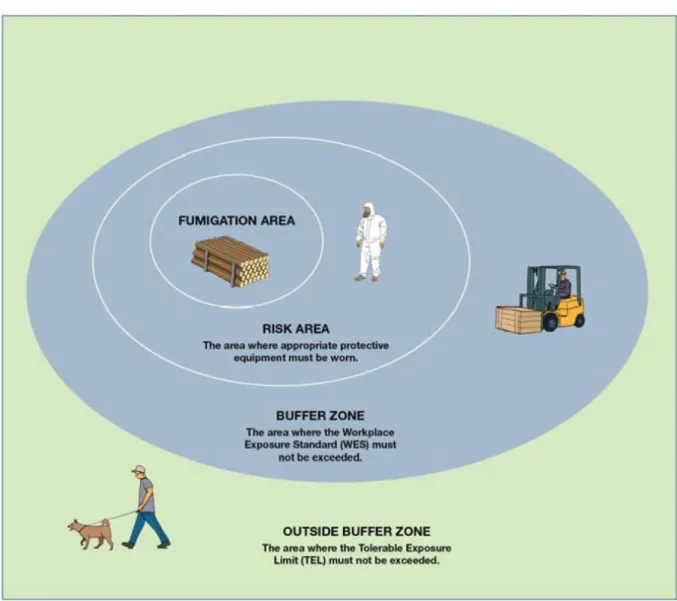
Monitoring results
It should be noted that these controls are set out in the HSW (HS) regulations with exclusions or reductions where recapture is used, so changes to these regulations would require Cabinet action under the HSWA.
Air dispersion modelling
Modeling assumed that 50% of the applied methyl bromide concentration was present in the free air under the tarpaulin at the end of the gassing, while the remaining 50% was assumed to be adsorbed in the blocks. They also considered the effect of ship height on downwind and the downwind dispersal of methyl bromide. 7.110 Due to the errors in the SEC report, we cannot reliably use the information for risk assessment or to propose regulatory changes for methyl bromide.
7.121 All but the PDP report were reviewed by air dispersion modeling experts on behalf of EPA and/or BOPRC.

Environmental effects
8 Technology
Recapture Technology
This appears to have the greatest impact on the ability of activated carbon to capture methyl bromide. Data in the application form and response to additional information indicate that testing has determined that 87% of the methyl bromide remaining after the fumigation step can be recaptured by this technique, with 70% within 3 to 4 hours. The average reduction of methyl bromide at all sample points at the end of each experiment is 52%, a maximum of 91% and a minimum of 18%.
In all reported results, there is a reduction of methyl bromide before "time 0" in the trial, which is not the case.

Implementation of new recapture technologies
The EIM gas destruction technology is the only [one] approved by the Montreal Protocol for the destruction of methyl bromide”. Production of hydrogen bromide when used in log stacks. Large-scale proof-of-concept prototype for cleanup and reuse of methyl bromide from log stacks.
Submitters' comments EIM Research Pty Ltd (Submission127552). Submission127543) Care needed in the choice of construction material as it must be corrosion resistant.
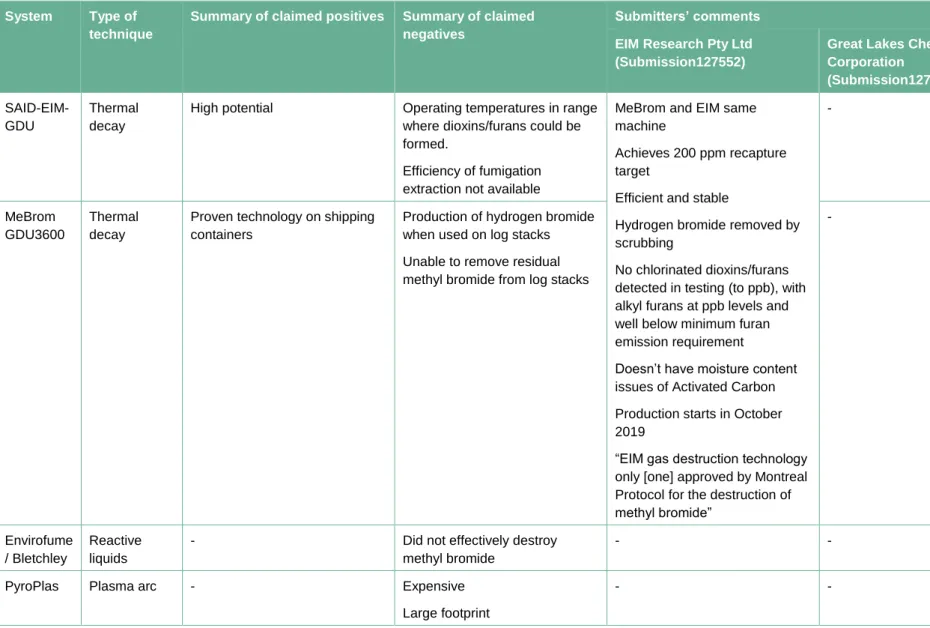
Alternative technology
9 Effect on society, the community, and the market economy
10 Māori assessment
2010 reassessment
Applicant’s consultation with Māori
The applicant also appears to be incorrectly informing participants that the reassessment will not change the monitoring requirements (compared to paragraphs 3.16 to 3.20).
Proposed changes
The submission from Ngāi Tahu sums it up as the "overarching responsibilities to the environment must take precedence over any commercial activities". For this reason, the Māori Perspectives report considers that the continued use of methyl bromide for an interim period until alternative or better recapture techniques become available is appropriate. The application may also significantly affect the relationship of Māori and their culture and traditions with their environment, taonga, including culturally important species, resources and places, and the customary values, practices and customs associated with these taonga.
11 Benefit assessment
Benefits of treating logs
The additional information response provides an example of New Zealand practice where logs are transported from Bluff (which is too cold for methyl bromide fumigation) to Napier for processing prior to export. Therefore, the presence of a port in Table 11 does not mean that methyl bromide fumigation is taking place in that port. None of the submissions attribute a value, quantity of logs/timber or number of jobs directly related to the use of methyl bromide.
Benefits to other export products
Benefits of treating imported products
They also highlighted the biosecurity protection methyl bromide fumigation provides them, using the pea weevil as an example pest.
Benefits to health
12 Cost assessment
13 Controls
Prescribed controls
Tolerable exposure limits
Recapture
Again, it should be noted that many proponents wanted to ban the use of methyl bromide, but that is outside the scope of this amended reassessment. For example, the Nelson Marlborough District Health Board (Submission127572) stated that they wanted to phase out methyl bromide within five years of the 2010 reassessment. They oppose the implementation of recapture technologies for all methyl bromide fumigation as it is now 20 years since the reassessment of 2010 as proposed by the petitioner.
It is recognized that this means that much higher concentrations of methyl bromide will be released after April 2021 compared to the 5 ppm target; however, it is still a big improvement on the lack of mandatory recapture currently required by the approval.
Buffer zones
The recapture to 5 ppm would provide the public health protection that the buffer zones were designed to achieve. WorkSafe recommended that buffer zone distances should not be reduced even when recapture is used and buffer zones are reassessed in response to validated modelling. A PCBU with management or control of quarantine or pre-shipment fumigation with methyl bromide must ensure that it is not used in a way that results in a concentration of the substance in the air at the boundary of the buffer zone that exceeds the tolerable exposure limit set for methyl bromide.
These distances are greater than the equivalent minimum buffer zones from the 2010 reassessment and HSW (HS) regulations (see Table 14).
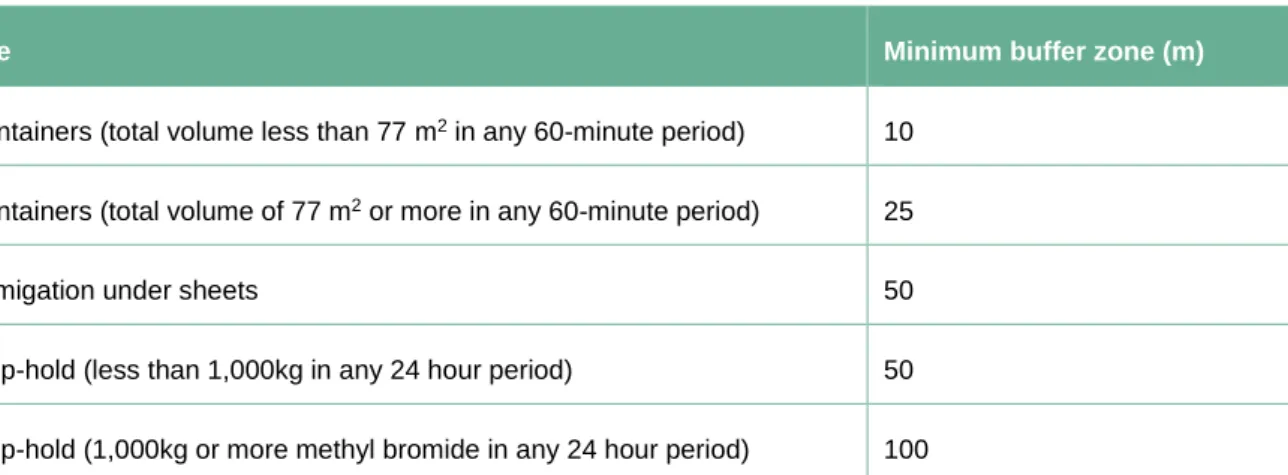
Ventilation constraints
Monitoring
This requires a good knowledge of the wind direction at the time of release of the methyl bromide and that this wind direction remains stable during the release. As such, some equipment in use may register VOCs other than methyl bromide. There are also no specific health monitoring requirements in the Fumigation (HS) part of the Regulations (Part 14, Regulations 14.1 to 14.43) for methyl bromide.
If recapture technology (as defined in this approval) is not used, in addition to Regulation 14.35(3) Health and Safety at Work (Hazardous Substances), additional data is required to be collected and held by the PCBU as defined in Sec. 17 of the Occupational Safety and Health Act 2015, is–. 1) the amount of methyl bromide in the upper part of the closed space at the end of the fumigation phase; and.
Recording and reporting
They provided a list of proposed improvements to the methyl bromide monitoring, recording, and reporting requirements that they would like to see established nationally (in addition to those presented in section 13.88). 13.108 WorkSafe notes that the requirements of the HSW (HS) regulations for recording and reporting exposure levels would not apply if recapture technology was implemented. 13.109 They also note that the annual monitoring reporting threshold does not include methyl bromide, which has been recaptured.
13.113 Reporting only the annual average of exposure levels became a mandatory control for all fumigation sites, with 1-hour and 24-hour exposure levels only to be reported if the relevant TEL was violated.
Permissions
In addition to Health and Safety at Work (Hazardous Substances) Regulation 14.37(3)(d), the annual monitoring report must include the substances measured by the monitoring equipment and the detection limit of the equipment for each substance. In addition to Health and Safety at Work (Hazardous Substances) regulation 14.7(2)(b), as defined in section 17 of the Health and Safety at Work Act 2015, a PCBU must notify the following persons of the PCBU's intention to carry out fumigation: . For the purposes of Health and Safety at Work (Hazardous Substances) Regulation 14.8(1), the PCBU must ensure that the parties in (1) and (2) are notified at least 24 hours before fumigation commences.
Controls specific to potato wart treatments
14 Overall evaluation and recommendation
Appendix A Acronyms
SARS Smith Agri International Distribution SEC Sullivan Environmental Consultants Inc SET Short-term workplace exposure limit.
Appendix B Recommended controls
The PCBU, as defined in section 17 of the Health and Safety at Work Act 2015, must ensure that there is a two-hour time gap between the ventilation of individual ship holds. Where recapture technology (as defined in this approval) is used, in addition to Health and Safety at Work (Hazardous Substances) regulation 14.35(2), the. additional data that must be collected and held by the PCBU as defined in section 17 of the Health and Safety at Work Act 2015 are–. 1) replace the references in rule 14.35(2) to “use and recapture” by. application, recapture and ventilation' and 'applied and recapture' with. used, recaptured and ventilated”; and. In addition to the Health and Safety at Work (Hazardous Substances) Regulation 14.36(2), a PCBU, as defined in section 17 of the Health and Safety at Work Act 2015-. 1) notify the relevant regional council in addition to WorkSafe and the relevant health officer as soon as practicable but within 24 hours if the TELair value is exceeded; and.
In addition to Health and Safety at Work (Hazardous Substances) regulation 14.37(3)(i), if a breach of the TELair value has occurred, then the annual monitoring report must contain –. 1) the source of that violation; and.
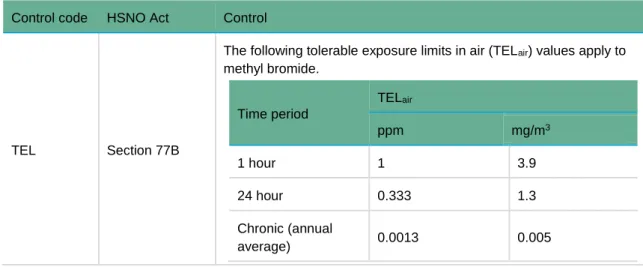
Appendix C Submitters’ details
127578 Cory Bourne New Zealand Council of Trade Unions (NZCTU) 127579 Tim Charleson Red Stag Timber Limited. 127587 Kevin Nalder New Zealand Fresh Produce Importers Association Incorporated 127588 Steffan Browning Soil & Health Association.
Appendix D Reports relied upon in this report
2019 Supplement to Air Concentration Dispersion Modeling [sic] Assessment of Methyl Bromide Concentrations in Tauranga Harbour, New Zealand. 2020 Methyl Bromide Exposure Modeling Report for Log Fumigation in the Port of Tauranga, New Zealand.

